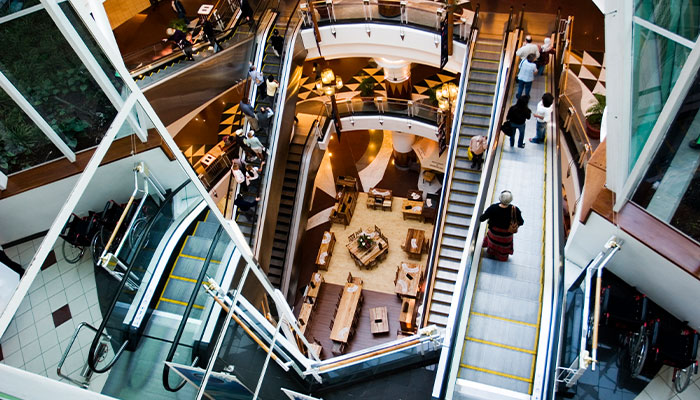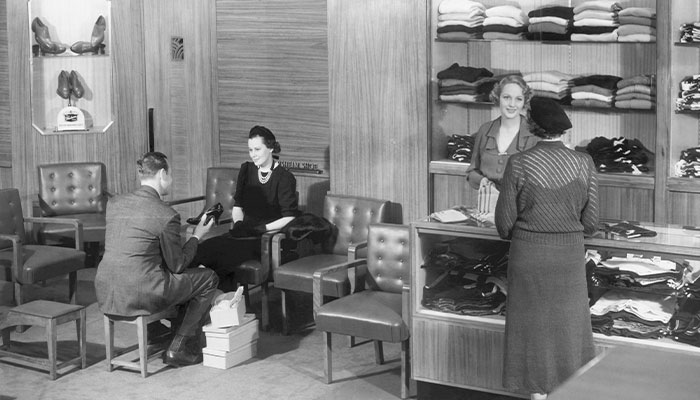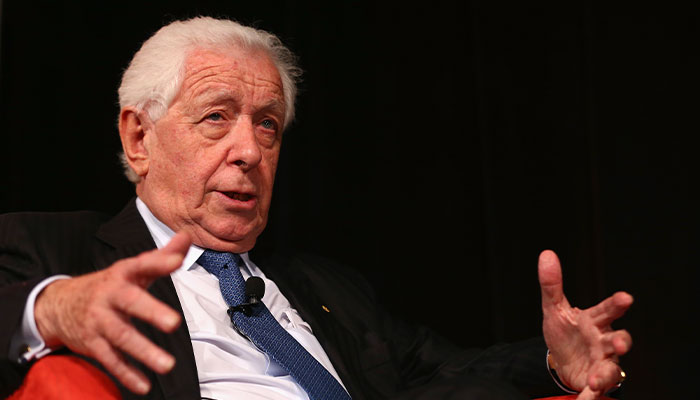The COVID-19 pandemic and resulting lockdowns disrupted a highly successful retail formula – the shopping centre, which over decades of evolution came to define themselves as social spaces that were far more than a collection of shops.

Marketers describe them as the ‘modern town square’, combining a range of functions and uses to provide magnetic, commodified social environments.
The sociability of shopping centre spaces had been an important ingredient in their success since the 1960s. It was also one of their strongest protections against online retail competition: many Australians simply loved going to the shops.
But COVID disrupted this business model. Physical shops and shopping environments, after all, depend on people visiting them.
Back to the beginning
Australian retailing changed in fundamental ways during the second half of the 20th century. In the 1950s and 1960s the industry was disrupted by suburbanisation, rising automobile ownership, and the arrival of supermarkets and shopping centres during an economic boom. This forced traditional firms to innovate and adapt, and opened doors for new entrants, including immigrant entrepreneurs like Frank Lowy and John Saunders who founded Westfield by leveraging opportunities in a rapidly changing market.

Looking back: The retail scene of the 1950s and 1960s was disrupted by forces including suburbanisation, rising car ownership and the arrival of supermarkets.
In one of the most successful business pivots in Australian history, national variety store firms Coles and Woolworths moved into food and supermarket retailing. They never looked back.
Over the next 50 years, Australia’s largest retail firms continued to adapt by changing their business models and incorporating new retail formats and technologies.
Retail ownership became more concentrated, while the shopping centre industry professionalised, welcoming an influx of institutional investors.
COVID accelerated the disruptive influence of online retailing and, for periods of time during lockdowns, completely removed people from physical shops.
At the same time, the specialty retail sector grew in scope and sophistication. By the 1980s, shopping centres, barely 30 years after first arriving in Australia, had become the dominant force in retailing.
Moreover, they proved capable of continual innovation. Every time a new retail format arrived in Australia, shopping centre landlords looked for ways to incorporate it.
Discount department stores like Kmart and Target became new anchor stores; food courts and, later, restaurants expanded the food offer of centres and kept shoppers there longer; category killer stores such as Rebel Sports and Toys “R” Us , which sold deep ranges of specific product categories, added further scope. Multiplex cinemas became essential components of large regional shopping centres from the late-1980s onwards.

Forward thinkers: Immigrant entrepreneurs Frank Lowy (pictured) and John Saunders founded Westfield by leveraging opportunities in a rapidly changing market.
The number and range of specialty retail shops also increased dramatically. When Miranda Fair opened in Sydney’s Sutherland Shire in 1964, it contained around 18 specialty stores. By 1995 it had 303. Today there are more than 400.
Miranda Fair and centres like it grew in the age of car-based, bricks-and-mortar retailing. Through economic ups and downs their fundamental ingredients of car-parking, air-conditioning, strong anchor stores, curated tenancy mixes and social atmosphere provided a platform for innovative responses to changing circumstances and retail trends.
Fears that this dominance would be challenged by online retail emerged around the same time as the GFC. These proved unfounded, largely because retailers proved adept at incorporating online into their existing business models.
However, COVID accelerated the disruptive influence of online retailing and, for periods of time during lockdowns, completely removed people from physical shops. In 2021, more than 80 per cent of Australians made an online purchase, helping push online sales to of total retail sales.
So what next?
Continual adaptation and slower growth
Any predictions of dead malls following the American precedent are premature. But changes are afoot for Australia shopping centres. Department stores face ongoing questions about relevance and performance. Online remains a significant competitive threat. Broader economic conditions are challenging. Technology continues to evolve.

New competition: In 2021, more than 80 per cent of Australians made a purchase online, where retailers are unconstrained by bricks-and-mortar logistics.
Shopping centres will continue to innovate by further diversifying their offer. They began as retail environments, but are now far more complex semi-public spaces. Thus, the industry describes them as “modern town squares”.
Creating commercial town squares will mean an increased diversification of functions within and around shopping centres. This will allow shopping centres to target a broader share of the consumer dollar and adapt to shifting spending patterns.
With established shopping centres protected from competition, to varying degrees, by planning legislation that constrains rival developments, their future is largely secure.
Shopping centres remain essential hubs in our urban landscapes. They will continue to be important economic and social spaces.
What is less certain is their rate of growth. Not all shopping centre usage can be monetised equally. The industry experienced this with large-scale entertainment arcades in the 1990s, which failed to turn a profit.
Since the 1980s, the bulk of rents in shopping centres have been derived from the intensive merchandising activities of specialty retailers. The services, entertainment facilities, and experiential products that will form the next wave of development may not generate the same income per square metre of space.
The extraordinary increase in size and profitability of shopping centres during the second half of the 20th century will also be harder to replicate in a mature market that now features global competition. Shopping centre dominance was, and is, built on physical geographies. Convenience was directly related to proximity and car-parking. But online retailers bring competition unconstrained by spatial logistics.
Shopping centres remain essential hubs in our urban landscapes. They will continue to be important economic and social spaces. Shoppers will continue to visit in droves, although they will also spend more of their money in other places.
The challenge for landlords will be how to maintain growth while incorporating the less intensive commercial activities that will be needed to attract and retain these hyper-connected consumers.

(pictured) is a Senior Lecturer in the Department of History and Archaeology, and author of Managing the Marketplace: Reinventing Shopping Centres in Post-War Australia (Routledge, 2020).








